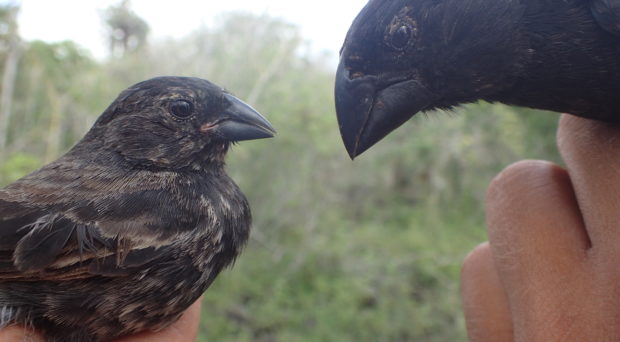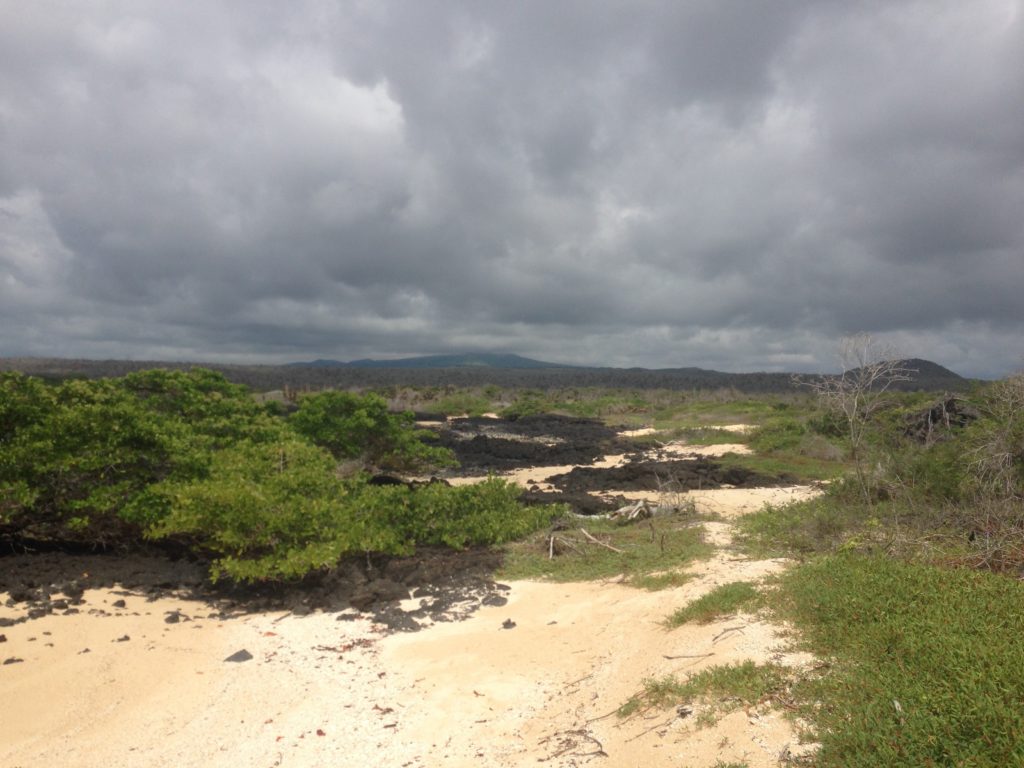
Humans have altered natural environments in profound and permanent ways. Indeed, various forms of human disturbance, including habitat destruction, an influx of trash, noise pollution, or introduced species, represent the primary threat to many species worldwide. Understanding how animals respond to these environmental changes is key for predicting the future survival of key species.
In this study we studied the effects of urbanization on native finches in the Galapagos Islands. The Galapagos have a well-known place in the heart and history of biology; Charles Darwin’s visit there in 1835 helped inspire his theory of evolution. The islands also present a great opportunity to study urbanization because unlike most Pacific archipelagos, the Galapagos were uninhabited until relatively recently. However, tourism and development on the islands has increased dramatically in the past 50 years, which creates new challenges for the native species.

We wanted to investigate if finches near Puerto Ayora, the urban center of Santa Cruz Island, were different than finches living in a more undisturbed habitat about 10km away. We studied two species at each site: the medium ground finch (Geospiza fortis) and the small ground finch (Geospiza fuliginosa), both of which are part of the group of 18 or so species collectively known as “Darwin’s finches.”
What is “epigenetics?”
Traditionally in evolutionary biology it’s assumed that for populations to change in response to the environment, selection must act on standing genetic variation. That is, certain genotypes are better suited to the new environment and so they will survive longer and have more offspring. However, the accumulation and spread of mutations that confer an advantage can be a slow and random process.
A new and exciting mechanism of adaptation to new environments involves “epigenetics.” These processes refer to molecular changes that affect when and how genes are expressed and can alter the phenotype of the organism independent of its DNA sequence. In this study we focused on DNA methylation, an epigenetic modification that can affect gene expression and, in some cases, is passed on to offspring. Importantly, other studies have found that DNA methylation can be affected by the environment, which means it’s a potential process by which animals can rapidly respond to changing environments.
Could epigenetics be playing a part in the response of Darwin’s finches to urbanization? To find out we tested for DNA methylation variation, as well as morphological and genetic variation, between urban and rural populations.
What did we find?

For one of our two species, the medium ground finch, we saw that urban finches were bigger in nearly all measurements than rural finches, potentially due to an increase in food resources near Puerto Ayora. Small ground finches, however, showed no differences in size between the urban and rural sites. We’re not sure why we only found morphological differences in the medium ground finch; however, it could be due to the fact that medium ground finches are generally more variable in size and so selection would likely act faster on this species.
We did not find any genetic differences between urban and rural populations. These results are consistent with previous studies that find little genetic variation in Darwin’s finch populations and species. Interestingly, however, we found striking epigenetic differences between urban and rural populations for both species.
Why does this matter?
Biological studies are just beginning to study epigenetics in wild populations. Although we can’t be certain how the DNA methylation changes we observed affect the way the birds look or act, it’s exciting to find that there is epigenetic variation between two geographically close populations. This is a first step in understanding if epigenetics is key to adaptation to rapidly changing environments.
Comments